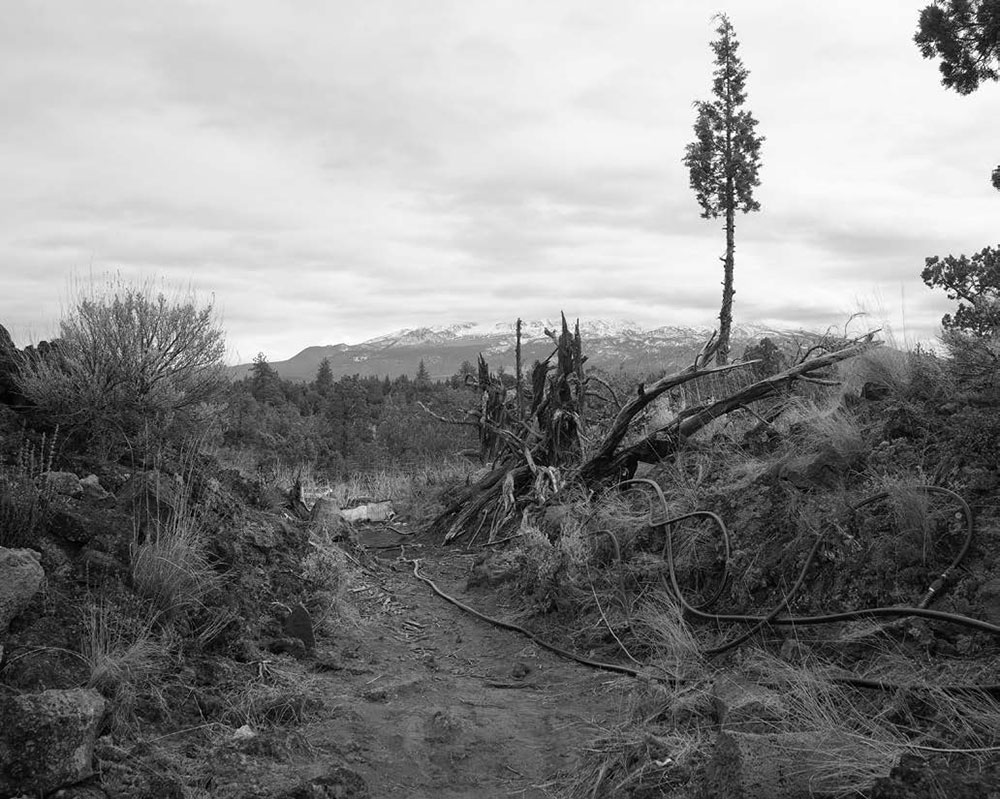A plaintive voice echoes across the main gallery of the San Jose Museum of Art, where Pao Houa Her’s exhibit “The Imaginative Landscape” is on view. A Conversation Between 4 Hmong Women is playing in a video installation in the adjacent room.
The artist places each woman separately, in the center of their respective frames. They’re projected onto a long wall, four in a row. They’re singing kwv txhiaj, a Hmong oral tradition, to each other in a chanted, call-and-response conversation. Not knowing the language, I ask Her if I’d projected my own sense of sorrow onto this form of sung poetry.
“One of the women I worked with, I learned that she was single, and that she will probably never be married because of the profession that she has chosen—singing,” Her explains. In Laos, the woman is a revered singer. But in the Hmong community, men do not consider female kwv txhiaj singers to be desirable partners. “This conversation between the four of them is about the trials and tribulations of what it means to be Hmong women in my community,” she says.
The main gallery features several of Her’s large-scale photo series. The artist takes a sculptural approach to making images. Colors and textures add depth and meaning to the landscapes and portraits. In untitled (real opium, behind opium backdrop, 2020), Her creates layers within her own visual language by arranging flowers in front of a backdrop that’s printed with flowers.
Dense jungle foliage fills up the series Pictures of Paradise. They are conspicuously devoid of human beings. But when I was standing up close in front of them, I sensed that the photographer’s point of view was from a hidden place, somewhere inside all the greenery. Her made lenticular prints for the series as a way “to activate” the viewer to give them “this perception of depth.”
Lenticular images are digitally sliced into a foreground, middleground and background before being printed on a special paper made with triangular ridges and then assembled. “When you move, the image slightly changes,” Her explains. “It shifts and moves with you.” The backstory only enhances this 3D effect.
Her took the Paradise photos in Laos on a trip with her parents. They had fled the country at the end of the Laotian Civil War (1959–1975). Before they emigrated to Minnesota, Her’s family landed in a Thai refugee camp for a year. And before their time in the camp, they lived in the jungle for two years. Pictures of Paradise revisits that formative place in Her’s family history. “When I started making these photographs, I was really thinking about these places as backdrops for these lives that continue to happen,” she says.

For Her’s black and white Mt. Shasta series, she frames the photographs in light boxes. The work, Her says, is heavily influenced by the photographers Carleton Watkins, Timothy O’Sullivan and Ansel Adams. “I’m thinking about the canon of Western landscape artists and the ways in which they were making work to entice settlers from the east to move westward,” she explains. Light boxes are often used as advertorial objects as seen in malls or airports.
As in the Pictures of Paradise, the Mt. Shasta images purposefully exclude people. “These barren landscapes have this very rich history but might not feel and look like anything if not for the light box itself that’s drawing you in,” Her says. The subjects are gnarled trees and rocky plains but there’s a Hmong community that has moved into the region to cultivate marijuana. For Her, the series is about the resiliency of the Hmong people who are working the land in this forbidding place.
In each of Her’s series, there’s a narrative arc taking place, moving from photograph to photograph. “Early on I decided that I wanted to be a photographer and a storyteller,” she recalls. “I wanted to be a writer but writing was never in the cards for me. But I learned really early on that photography was very similar to writing.”
Her compares her artistic practice to lines in a story, to words and punctuation marks. “I was thinking about ways in which I can sequence the work to tell a story so I started photography in that way,” she says. “I also have this love for the history of photography as it relates to the Americas, the world and the Hmong people.”
Pao Houa Her: The Imaginative Landscape is on view at the San José Museum of Art through Feb. 22, 2026. 110 South Market St., San José. sjmusart.org.

